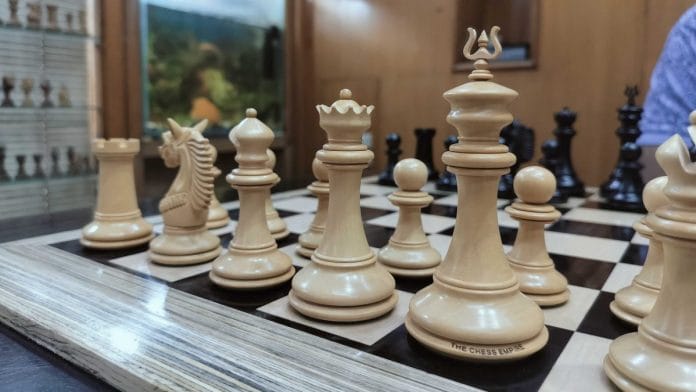Thank you dear subscribers, we are overwhelmed with your response.
Your Turn is a unique section from ThePrint featuring points of view from its subscribers. If you are a subscriber, have a point of view, please send it to us. If not, do subscribe here: https://theprint.in/subscribe/
AI is replacing jobs—but which ones, and why? That question keeps resurfacing as headlines ping between panic and hype. The real answer, though, lies not in broad generalizations but in a deeper understanding of how different types of AI actually work—and more importantly, where they thrive and where they struggle.
To unpack this, let’s start with a tale of two AIs. One plays chess. The other drives a car.
The Game That Changed Everything
Chess was once the gold standard of human intelligence. It required memory, strategy, foresight—surely, we thought, only the brightest minds could master it. Then came Deep Blue, then AlphaZero, and today, chess engines far outstrip the world’s best grandmasters.
Why? Because chess is a closed world. The board is an eight-by-eight grid. The rules are fixed. Every piece behaves predictably. A knight never surprises you by moving like a queen. And the worst that can happen if the AI makes a mistake? It loses the game. No one gets hurt.
That’s what makes chess such a perfect domain for AI. It’s highly predictable, and the consequences of error are minimal.
The Road That Refuses to Be Tamed
Now think of a self-driving car. Its environment is the polar opposite of a chessboard. The road is full of unpredictable drivers, jaywalking pedestrians, blown-out tires, random construction, rain-slicked asphalt, and sudden GPS glitches. There’s no guaranteed script.
Worse, a single error can have catastrophic results. A misjudged turn or a missed stop sign doesn’t just mean “game over”—it could mean injury or even death. In this world, low predictability collides with high consequences, demanding an entirely different kind of intelligence—one that machines still struggle to master.
The Two-Axis Map of AI’s Real Power
What separates chess-playing AIs from self-driving ones isn’t just technical complexity. It’s the nature of the task itself. And that brings us to the core idea: a two-axis map that helps us understand where AI excels, where it falters, and what it means for the future of work.
Imagine a graph:
- On the horizontal axis, you have Predictability. To the right: structured, rule-based tasks like bookkeeping or board games. To the left: chaotic, real-world tasks like emergency response or childcare.
- On the vertical axis, you have Consequence of Error. At the bottom: low-stakes domains where mistakes are annoying but harmless, like a bad movie recommendation. At the top: high-stakes arenas where a single misstep can cause financial ruin or loss of life.
Jobs that sit in the bottom-right corner—predictable and low-consequence—are prime targets for full automation. Think data entry, inventory tracking, or sorting packages in a warehouse. Machines handle these with ease.
But jobs in the top-left corner—unpredictable and high-consequence—remain stubbornly human. Think surgeons, firefighters, diplomats, or yes, even taxi drivers. These roles demand judgment, adaptability, empathy, and accountability. They are much harder, if not impossible, for AI to fully replace.
Enter the Centaur
This is where one of the most powerful ideas in AI comes into play: human-AI collaboration. Borrowed from the world of chess, it’s called “Centaur Chess.”
In Centaur Chess, human players team up with AI engines. The machine crunches millions of possibilities per second. The human brings strategy, creativity, and long-term thinking. Together, they often outperform both lone humans and pure AI systems.
This hybrid model is the future of many professions. In medicine, AI can scan thousands of X-rays in seconds, flagging anomalies. But a doctor makes the final call, understanding the patient’s story, context, and risks. In creative fields, AI can generate endless design variations, but an artist selects, curates, and gives meaning.
The centaur doesn’t fear the machine. It rides it.
Rethinking the Future of Work
So, when people ask, “Will AI take my job?” the better question is: What kind of task is it? Is it rule-based or fuzzy? Are the stakes low or life-changing?
AI is incredibly powerful at doing narrow, well-defined things faster than any human. But it is brittle in the face of chaos, ambiguity, and moral weight. And in those very places—where the world is messy and the stakes are high—humans are not just relevant; they are indispensable.
The future of work won’t be a clean divide between jobs AI can do and jobs it can’t. It will be a layered world, where the most effective roles are those that blend human judgment with machine intelligence.
So yes, some jobs will disappear. But others will evolve. And the real winners will be the centaurs.
These pieces are being published as they have been received – they have not been edited/fact-checked by ThePrint.


